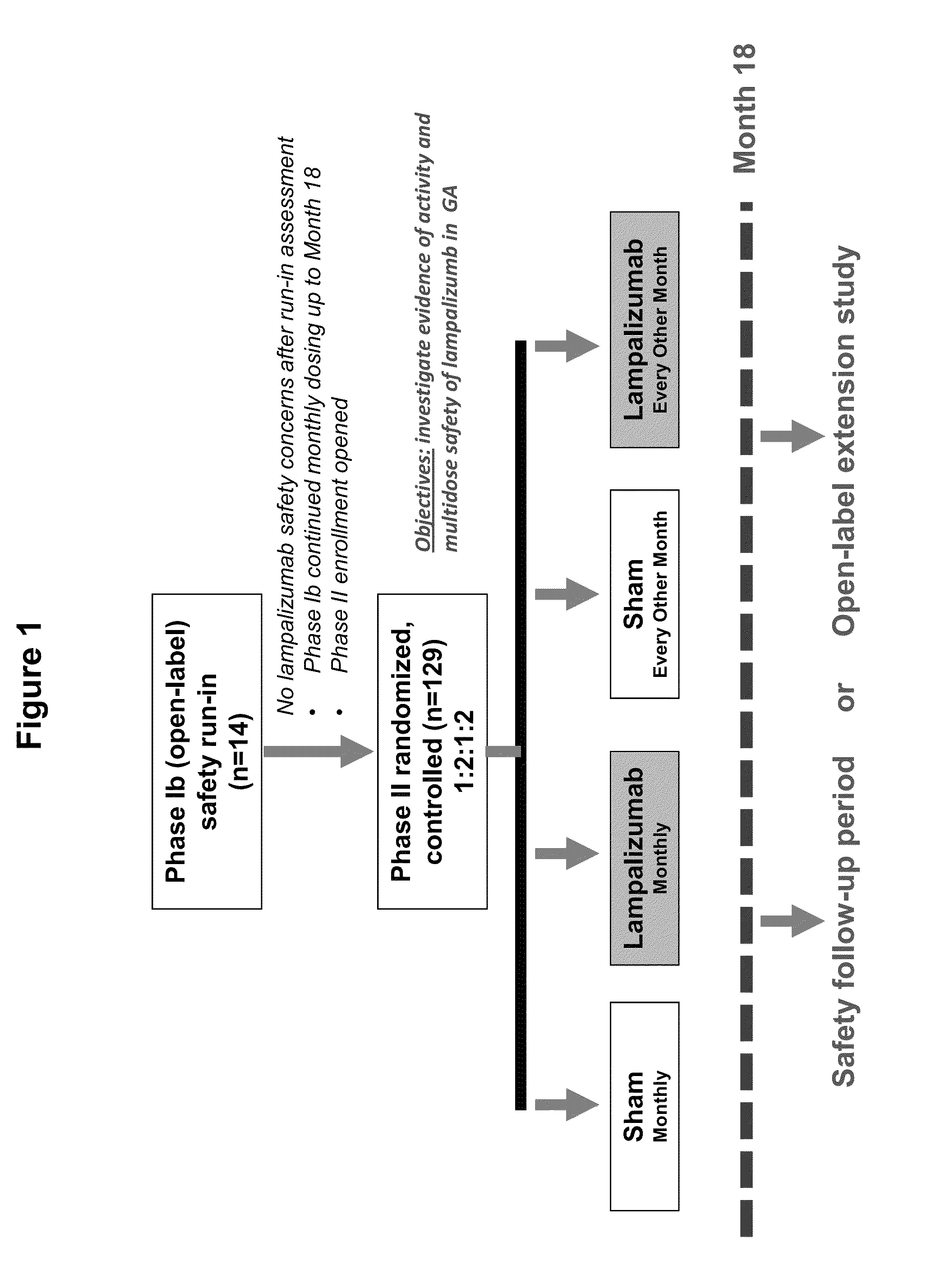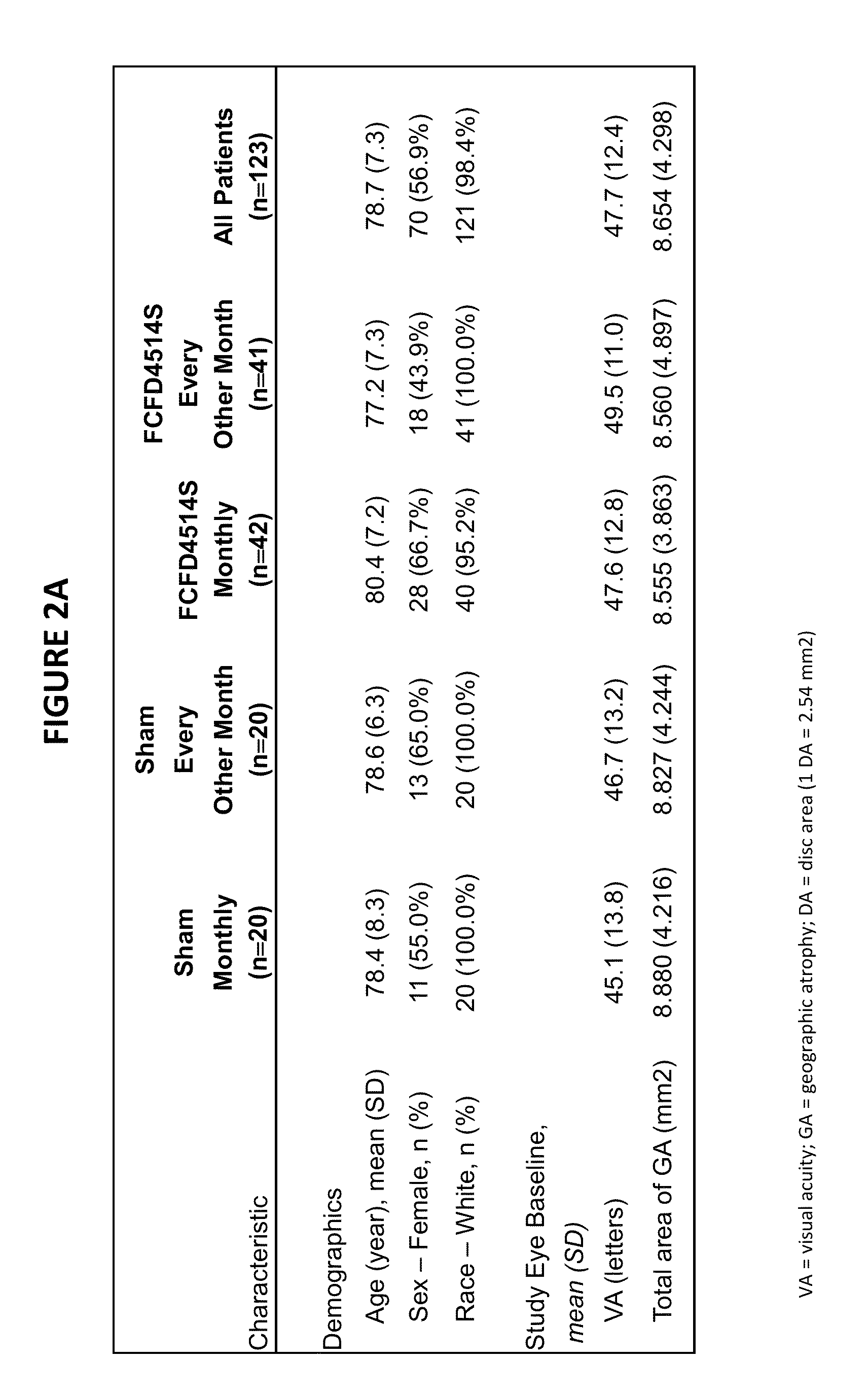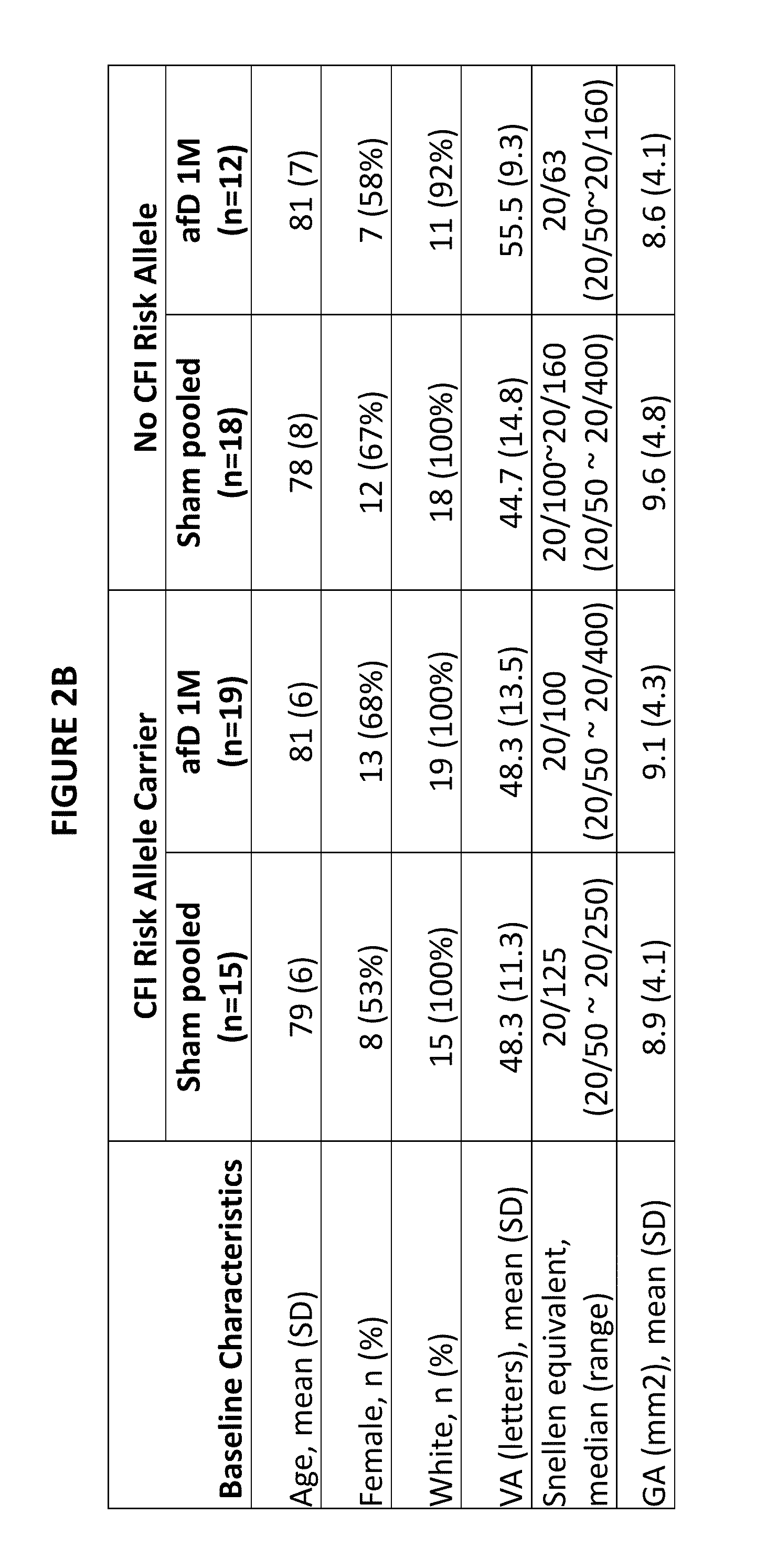Compositions and method for treating compliment-associated conditions
a technology of compositions and conditions, applied in the field of compositions and methods for treating compliment-associated conditions, can solve the problems of significant unmet needs for patients, no effective treatment that halts or slows the progression of ga, etc., and achieves the effects of reducing risk, increasing risk for amd progression, and increasing risk
- Summary
- Abstract
- Description
- Claims
- Application Information
AI Technical Summary
Benefits of technology
Problems solved by technology
Method used
Image
Examples
example 1
Geographic Atrophy Clinical Study
1. Summary
[0350]A Phase 1b / II, randomized, single-masked, sham injection—controlled multicenter study was carried out to evaluate the safety, tolerability and evidence of activity of lampalizumab intravitreal (ITV) injections administered monthly or every other month for an 18-month treatment period in patients with geographic atrophy (GA). The randomized study was preceded by a safety run-in assessment. Primary, secondary and exploratory outcomes were assessed at the conclusion of the 18-month treatment period. A 3-month safety follow-up period commenced after administration of the final ITV or sham injection for study patients who did not qualify or chose not to continue into the open-label extension study (OLE). For the safety run-in assessment, multiple monthly administrations with 10 mg of lampalizumab ITV was conducted prior to initiating enrollment in the randomized phase of the study. All patients in the safety run-in assessment received a mi...
example 2
Efficacy Analysis
[0754]Treatment effects at 18 months from patients who received lampalizumab administered IVT versus or sham injection as described in Example 1 are set forth in FIGS. 3-7 below. FIGS. 3-7 set forth the treatment effect by measuring mean change from in GA area (mm2) from baseline at month 18.
[0755]FIGS. 3A and 3B shows the preliminary efficacy results right after the primary database lock for the MAHALO phase II study with an all-corners population. The study met its primary endpoint of mean change from baseline in GA area at 18 months as measured by fundus autofluorescence (FAF) and met its secondary endpoint of mean change from baseline in GA area at 18 months as assessed by color fundus photography (CFP) in the lampalizumab monthly group. A positive treatment effect in slowing the progression of GA area growth was observed in the monthly group beginning at 6 months and extending through 18 months. On the basis of the unadjusted means with the LOCF data, the lampa...
example 3
Genotyping Analysis Results
[0758]Participants in the anti-factor D study (n=93) were genotyped using the Illumina Omni 2.5M SNP chip. For the genotyping, single whole blood samples were collected from each patient. Genomic DNA was extracted from each sample and analyzed using the Illumina Omni 2.5M SNP chip (Oliphant et al., Biotechniques, Suppl: 56-8, 60-1 (2002)). We applied the following quality control measures to the genome-wide data, removing as follows: samples with >5% missing SNPs (n=44,180), samples with >5% missing SNPs (n=0), SNPs with minor allele frequency <0.1 (n=831,590), Hardy-Weinberg Equilibrium <1e-8 (n=1,678), duplicated / related samples (n=0), SNPs that did not map to the proper chromosome (n=3,624), SNPs with no rs identifier (n=56,333). This left a total of 1,442,450 SNPs after quality control measures.
[0759]From this set of 1,442,450 SNPs, we selected 4 index SNPs (rs10737680 (CFH); rs429608 (C2 / CFB); rs2230199 (C3); rs4698775 (CFI)) from the manuscript Frits...
PUM
| Property | Measurement | Unit |
|---|---|---|
| Composition | aaaaa | aaaaa |
| Linkage disequilibrium | aaaaa | aaaaa |
Abstract
Description
Claims
Application Information
 Login to View More
Login to View More - R&D
- Intellectual Property
- Life Sciences
- Materials
- Tech Scout
- Unparalleled Data Quality
- Higher Quality Content
- 60% Fewer Hallucinations
Browse by: Latest US Patents, China's latest patents, Technical Efficacy Thesaurus, Application Domain, Technology Topic, Popular Technical Reports.
© 2025 PatSnap. All rights reserved.Legal|Privacy policy|Modern Slavery Act Transparency Statement|Sitemap|About US| Contact US: help@patsnap.com



